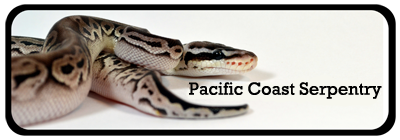» Site Navigation

0 members and 1,274 guests
No Members online
Most users ever online was 47,180, 07-16-2025 at 05:30 PM.
» Today's Birthdays

» Stats

Members: 75,937
Threads: 249,130
Posts: 2,572,295
Top Poster: JLC (31,651)
|
-
Registered User


 Snake size/age appropriate housing sizes Snake size/age appropriate housing sizes
I don't have a concrete time frame planned for acquiring my first BP, although it's likely I'll bring one home from the next show I go to, in September. I certainly want to be completely prepared ahead of time. Can you offer some information about housing sizing recommendations for a young BP? Is there a reason for starting with a smaller tank size for a smaller snake? If so, why would a larger setup (appropriate for an older BP) be inappropriate? Does it have to do with heating and humidity or the snake's environmental preferences?
Sorry for all the questions that are probably no-brainers to most of you. I appreciate your patience with a novice!
Last edited by Guiding Golden; 07-12-2012 at 02:05 PM.
-
-
The smaller the snake the smaller the enclosure because BPs need the tighter/smaller space to feel more secure. I suggest when you figure the timeframe when you are getting your snake, you should plan at least two weeks prior to have everything setup and ready to go. That gives a week to get the proper holes to get the humidity and everything right and then another week to ensure it stays steady. that way all you need to do is your BP and put him/her inside.
Last edited by RetiredJedi; 07-12-2012 at 02:14 PM.
1.0 Boxer (Boba…@bobatheboxer on IG)
-----------------------------------------------------------------
"Blaming the leader of the fools should not blind anyone to the vast confederacy of fools that made him their leader."
~unknown~
-----------------------------------------------------------------
SUPPORT OUR WOUNDED WARRIORS
-----------------------------------------------------------------------------------------------------------
-
The Following User Says Thank You to RetiredJedi For This Useful Post:
-
You want an enclosure that is sized for the snake. A hatchling ball python might get very stressed from being in a large enclosure meant for an adult. Since they are so small they are very vulnerable to predators. Keeping the cage size small makes them feel safe which in turn leads them to eat on a regular basis.
Many of us use tubs. 6qt for a hatchling up to 250g or so, 15qt for juveniles up to 600g, 32qt for up to 2,000g, and 41qt for 2,000+.
The bigger the enclosure, the more air you need to heat and keep humidity. Ball pythons are terrestrial snakes, meaning they spend most of their time on the ground, so height is not really crucial. I wouldn't exceed 12" because all the extra space is never going to be used by the snake, but you still have to regulate the temperature.
If you need to use a glass tank, start with a 10 gallon and then increase the size after it is about a year old.
-
The Following User Says Thank You to Kaorte For This Useful Post:
-
The enclosure size has everything to do w/ the size of the snake.
Baby balls tend to stress easily so to minimize that stress, it's best to keep them in a small tight space.
And I agree with everything the other posters have stated.
If you want to save money, I recommend going with a tub set up until your snake it's grown or can at least until it's large enough to feel comfortable in a larger enclosure. That way, you don't have to keep buying tanks and upgrading them every few months/year. Tanks are expensive. Tubs are only a few dollars.
Here's my tub size list:
6 qt - for hatchlings
16 qt - 500 or less grams
28/32 qt - 2000 or less grams
41 qt - 2000 + gram adults
Using a larger enclosure is possible, but you would have to make sure the snake has lots of hides and cover. Make sure it doesn't feel too open. Like I said, BPs tend to stress easily for insecurity.
Also ball pythons are a terrestrial snake, so they don't really need much head space. Plus the extra head space in a tank makes it a little harder to heat and maintain humidity.
-
-
The above posts are spot on but they are not hardfast rules.
As people have said, you can get away with a bigger enclosure for a smaller snake if you provide ample cover.
I kept a few of my snakes in 41 qt tubs from 150g - 500g and none of them missed a meal or showed signs of stress.
I gave 4 or 5 appropriate sized hides, several fake plants, and several half logs and branches to fill the space. No problem.
Funny enough, for my own space issues I downgraded them all to 32 qt tubs until they really need the space. They hide in 1 of 2 6" by 6" spots nearly 90% of the time. Lots of space is simply overkill for ball pythons.
Remember, this is where they would live if they had the choice:

-
 Posting Permissions
Posting Permissions
- You may not post new threads
- You may not post replies
- You may not post attachments
- You may not edit your posts
-
Forum Rules
|








 Reply With Quote
Reply With Quote
